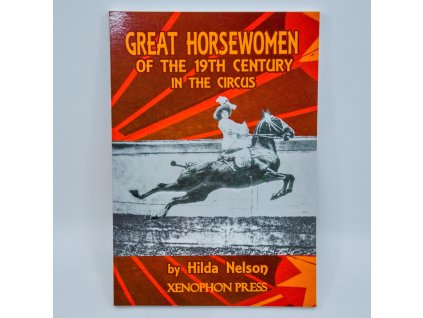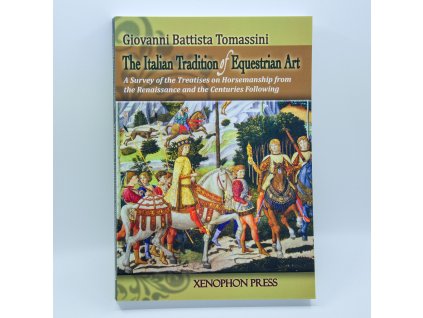Divide and Conquer Book 1: Fundamentals of Dressage – François Lemaire de Ruffieu
Související produkty
Detailní popis produktu
Calm, Forward and Straight must always serve as a guideline during the training and the order should not be interchanged. On this subject, all Riding Schools worldwide agree. These schools diverge only in their style due to the culture of their own country. In these volumes, I recapture and explain the foundations provided by the great Masters. I have provided appropriate exercises to recreate, develop, and enhance the horse’s natural gaits that should be the common denominator of all riding styles and training disciplines, including Dressage, Jumpers, Hunters, Western, Pleasure, and many others. Book One includes the training progression from the beginning of the elementary level. The training mastered in Book One will be necessary to accomplish the collected and extended gaits, pirouette at the canter, tempe flying changes of lead, piaffe and passage in Book Two. This work study explains how to Divide and Conquer the horse's body parts. To be able to properly perform the exercises, the horse should be able to find the appropriate head position independent of the rider. If these exercises, alone, do not result in the horse being able to find the appropriate head and body position, I explain the prerequisites to correctly set the horse's head: cession (yielding) of the mouth and the flexion of the poll.
François Lemaire de Ruffieu grew up in France. He was first trained by Master Jean Couillaud and graduated in 1967 from the Cadre Noir, one of the oldest and most prestigious riding academies in Europe. During his 6 years in the cavalry at Saumur and Fontainebleau, he studied and showed extensively in dressage, stadium jumping, three day eventing and steeplechase. He taught riding in Paris at the Military School of War. Since 1978, he has given clinic throughout United States of America and Europe. His students have won year-end high-score awards in equitation, hunter classes, stadium jumping, dressage, and combined training. Since 1988, he has been a panel member of the American Riding Instructor Certification Program and in 1996 he was awarded the title of Master Instructor. He currently lives in Florida.
Hardcover edition. Table of Contents: Avant Propos Preface Introduction Important Instruction Review Initiation to Dressage Principles - The Rider’s Aids Advice for Trainers and Riders before Beginning the Training Study The Rider’s Position Seat How does the rider obtain a good seat? Where should the rider sit in the saddle? How to place the seat in the saddle Holding the Reins The Aids Exercises for the Rider Lower Body Exercises for the Cox-Femoral Joints and Lower Back while Mounted Exercises for the Ankles Upper Body Exercises or the Shoulders and Lower Back while Mounted Concepts in Training of the Horse Impulsion - Flexibility Impulsion Flexibility Obedience to the Rider’s Leg Actions Longitudinal and Lateral Movements Lesson One – The Learning Phase—Initiation Period (“Equi-robic” Exercises) Learning Phase A. Transitions Walk-Stop-Walk Adjusting the Reins Transition from Stop to Walk Teaching a Lazy Horse to be Obedient to the Legs B. Zigzag (Serpentine or Slalom) Rein Actions Direct Rein Direct Rein of Opposition Indirect Rein Indirect Rein of Opposition in Front of the Withers Indirect Rein of Opposition Behind the Withers C. Lengthening and Shortening the Walk D. Moving the Haunches E. Rein Back F. Changing Directions Lesson Two – The Working Phase, Beginning of Dressage, “Low School Dressage” The Trot A. Longitudinal Exercise: Transitions Trot-Walk-Trot B. Lateral Exercise: Zigzags C. Longitudinal Exercise: Lengthening and Shortening the Strides at the Trot D. Lateral Exercise: Moving the Haunches Lesson Three -- Further Study The Canter Progression to generate the right lead canter by applying the outside lateral aids Progression to generate the right lead canter by applying the inside diagonal aids Progression to generate the right lead canter by applying the inside lateral aids Progression to obtain the right lead canter from the walk Progression for the downward transition from the canter to the walk Phase One. Steady the Pace Phase Two. Shorten the Canter Strides Phase Three. Lengthening the Canter Strides Exercises to Improve the Canter Counter-canter Lesson Four -- Exercises Exercise One. Transitions, Changing Gaits Exercise Two. Zigzags Exercise Three. Lengthening and Shortening the Gaits Exercise Four. Moving the Haunches Lesson Five—On the Bit A. Lateral Flexion B. Direct Flexion C. Placing the Horse on the Bit D. Placing the Horse on the Bit While Moving Laterally Lesson Six—Practical Exercises A. To unlock the horse’s poll and spine B. To prepare for the rotation of the shoulders around the haunches C. To stretch and compress the horse’s entire body D. To further unlock the horse’s shoulders E. To further unlock the horse’s haunches F. To coordinate both extremities of the horse G. To individually and then simultaneously move the horse’s body parts H. To coordinate the rider’s aids by displacing the horse’s body parts I. To supple the horse’s spinal column and teach the rider to coordinate the aids J. To develop instantaneous response to the rider’s aids K. To further develop obedience and spontaneity to the rider’s aids L. To improve the mobility of the horse’s hindquarters M. To improve the suppleness of the horse’s spinal column in both directions N. To prepare for the outside half pirouette O. To prepare for the outside half counter pirouette P. To prepare for the inside half pirouette Q. To prepare for the inside half counter pirouette R. To develop instantaneous obedience to the rider’s aids and instill the idea of full pirouettes S. To prepare for the instantaneous obedience to the rider’s aids and eventually to perform full counter pirouettes T. Test longitudinal obedience U. Lengthening the trot on the diagonals across the arena V. Improve canter departures W. Spiral in and out at the canter X. To improve and perfect the counter-canter Y. To prepare for the future flying changes of lead at the canter Z. Exercises blending longitudinal and lateral movements to verify the promptness of the horse’s obedience and the rider’s accuracy Friendly Advice Epilogue
Doplňkové parametry
| Kategorie: | Drezura |
|---|---|
| EAN: | 9780933316867 |
| Jazyk: | angličtina |
| Vazba: | pevná |
| Počet stran: | 172 |
| Nakladatel: | Xenophon Press, 2016 |
| ISBN: | 9780933316898 |
| Rozměry: | 19.1 x 1.1 x 23.5 cm |
Buďte první, kdo napíše příspěvek k této položce.
Pouze registrovaní uživatelé mohou vkládat příspěvky. Prosím přihlaste se nebo se registrujte.
| Výrobní společnost : | Xenophon Press LLC |
|---|---|
| Adresa : | 7518 Bayside Road, Franktown, VA 23354-2106, UNITED STATES |
| E-mail : | xenophonpress@gmail.com |
.png)














